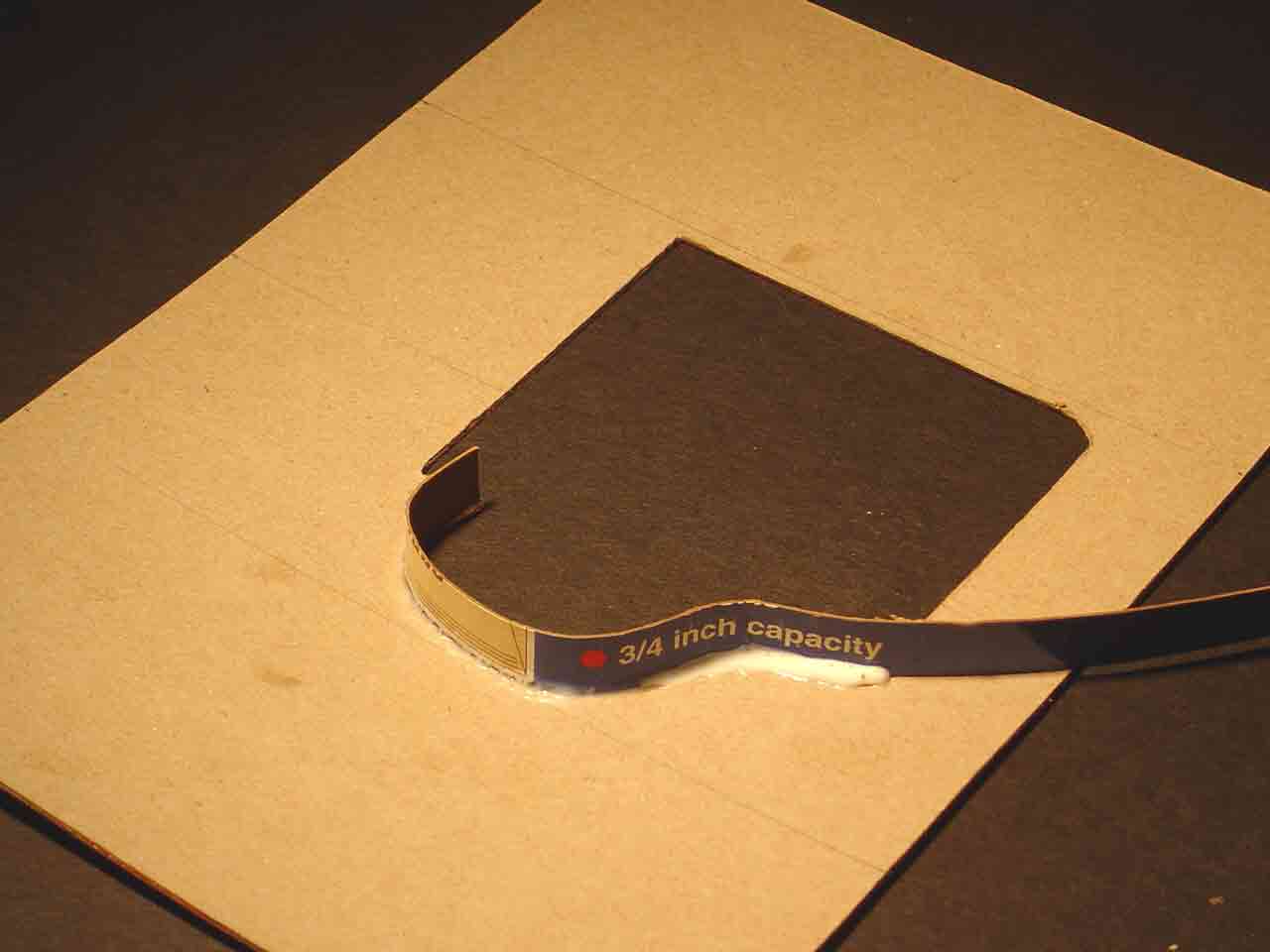The right-hand photograph in Plate 141 shows the back of the strip, as does the view shown here. However, in Plate 141, the back of the strip was in shadow, while in this view the back of the strip is illuminated, revealing colored printing on the claycoated side of the strip (see Plate 129 for a discussion of claycoated boxboard).
--more--

The white glue being used to affix the curved strip to the edge of the cut-out is made from polyvinyl acetate (PVA). This inexpensive type of glue is available in the stationery department of any discount store.
Observe that the glue is an opaque white liquid when it is first applied. However, PVA glue shrinks into a semi-transparent condition when dry.
PVA glue is highly adhesive when applied to boxboard. When wet, PVA glue can be easily removed with a damp cloth or paper towel. When fully dried, however, the only practical way to remove PVA glue is with a sharp knife, such as a modeler's knife. If it is necessary to remove dried PVA glue, the removal must be performed with great care in order to avoid damaging the surfaces which have been glued.
Go to top of page